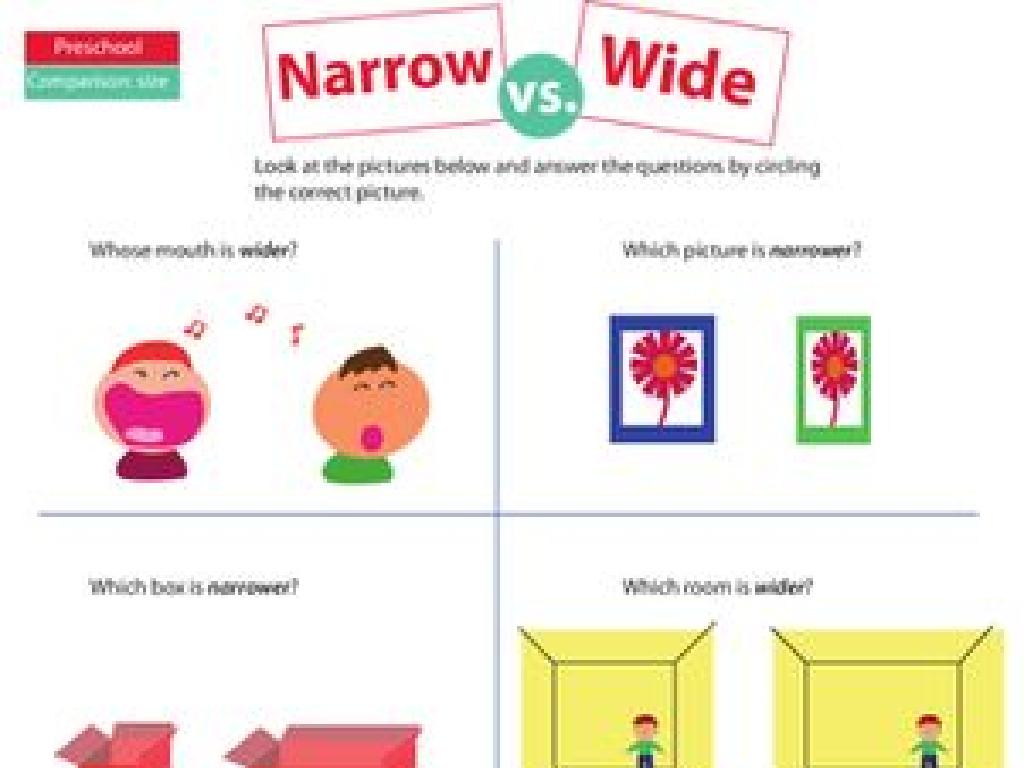Select Countries Of Africa: Review
Subject: Social studies
Grade: Seventh grade
Topic: Africa: Geography
Please LOG IN to download the presentation. Access is available to registered users only.
View More Content
Exploring Africa’s Geography
– Africa’s diverse landscapes
– Deserts, mountains, and rivers shape Africa’s diverse environment.
– Geography’s role in culture
– Geography affects traditions, languages, and livelihoods.
– Daily life influenced by geography
– Access to resources and climate impact daily activities.
– Focus on select African countries
|
This slide introduces students to the vast and varied geography of Africa, setting the stage for a deeper review of select countries within the continent. Emphasize Africa’s diverse landscapes, including the Sahara Desert, the Nile River, and the Great Rift Valley, and how these geographical features have shaped the continent’s culture and daily life. Discuss how geography influences what people grow, the types of homes they build, and even their social structures. The lesson will then narrow down to explore specific countries, providing a more focused understanding of how geography plays a pivotal role in the development and diversity of cultures within Africa. Encourage students to think about how their own daily life is influenced by geography to draw parallels and foster a connection with the material.
Exploring the Map of Africa
– Identify African countries on a map
– Discuss each country’s location significance
– Consider factors like trade, climate, and history
– Engage in a map-pointing classroom activity
– Students take turns to locate and point out countries
– Reflect on the activity’s learning outcomes
– Share what was learned through the activity
|
This slide is designed to help students visually connect with the geography of Africa and understand the importance of location for different countries. Start by having students identify various African countries on a map. Discuss how a country’s location can affect its climate, trade opportunities, and historical relationships with other countries. For the activity, have a large map of Africa available in the classroom and ask students to come up and point to different countries that you name. This interactive element helps to reinforce their spatial awareness of the continent. After the activity, facilitate a discussion on what they learned and how this knowledge can be applied to understand the diverse continent of Africa better.
Africa’s Physical Geography
– Africa’s major rivers, mountains, deserts
– The Nile River, Sahara Desert, and Mount Kilimanjaro are key landmarks.
– Geography’s impact on population
– Areas with water sources are more densely populated.
– Geography’s influence on culture
– Traditions, clothing, and lifestyles adapt to the environment.
– Explore Nile, Sahara, Kilimanjaro
– The Nile supports agriculture, Sahara shapes nomadic cultures, Kilimanjaro attracts tourism.
|
This slide aims to review the major physical features of Africa, such as its rivers, mountains, and deserts, and discuss how these features influence the population distribution and cultural practices. Emphasize the importance of the Nile River for agriculture and civilization, the Sahara Desert for its impact on nomadic lifestyles, and Mount Kilimanjaro as a symbol of natural beauty and a hotspot for tourism. Encourage students to think about how living near these features would affect their daily lives and to consider the diversity within the African continent. Provide examples of how geography has shaped historical and contemporary societies in Africa.
Climate Zones of Africa
– Africa’s diverse climate zones
– Ranging from arid deserts to tropical rainforests
– Climate’s impact on life
– Climate affects food growth and daily activities
– Egypt vs. Congo climate
– Egypt has an arid climate, while Congo is tropical
– Agriculture influenced by climate
– Different crops thrive in different climates
|
This slide aims to explore the various climate zones across Africa and how these climates affect agriculture and lifestyle. Highlight the stark contrast between Egypt’s arid desert climate and the tropical climate of the Congo. Discuss how these climates dictate the type of crops that can be grown, the lifestyle of the inhabitants, and the economic activities that are most viable in each region. Encourage students to think about how living in these different climates would influence their own lives. Use maps and images to visually represent the climate zones and provide a comparative analysis of the two case study countries.
Cultural Diversity in Africa
– Ethnic groups across Africa
– Africa is home to thousands of ethnic groups, each with its own culture.
– Languages spoken in Africa
– Over 2,000 languages are spoken across the continent.
– Geography’s impact on culture
– Cultural practices often develop based on the geography of the region, like nomadic herding in arid areas.
– Discuss geography’s cultural influence
|
This slide aims to explore the rich cultural diversity within select African countries, emphasizing the variety of ethnic groups and languages. Highlight how the continent’s geography, with its deserts, rainforests, and savannas, has shaped the cultural practices of different communities. For instance, the Maasai’s pastoral lifestyle is adapted to the grasslands of East Africa. Encourage students to think critically about how the physical environment influences the way people live, the jobs they have, and the traditions they uphold. The discussion should help students connect geographical features with cultural development and diversity.
Economic Activities in Africa
– Agriculture’s role in Africa
– Farming is a key livelihood for many Africans.
– Mining and African economies
– Africa is rich in minerals; mining is crucial.
– Tourism’s impact on Africa
– Tourists flock to Africa for its wildlife and landscapes.
– Matching countries to activities
|
This slide aims to review the various economic activities that are prevalent in Africa, such as agriculture, mining, and tourism, and their significance to the continent’s economy. Agriculture is a primary source of income and employment for a large portion of the African population. Mining is also significant due to Africa’s abundance of natural resources like diamonds, gold, and oil. Tourism is growing, with many countries capitalizing on their natural beauty and wildlife. The class activity will involve matching African countries with their main economic activities, which will help students understand the diversity and richness of Africa’s economy. Possible activities include matching Nigeria with oil production, Egypt with tourism, and South Africa with mining.
Review and Reflect: Africa’s Geography
– Recap of today’s key points
– Importance of learning about Africa
– Understanding diversity and cultural richness
– Insights gained on African geography
– Varied climates, landscapes, and resources
– Reflect on new knowledge
|
This slide aims to consolidate the students’ knowledge from the lesson and encourage reflection on what they have learned about the geography of Africa. Start by summarizing the key points discussed, such as major rivers, deserts, and mountain ranges. Emphasize the importance of learning about Africa’s diverse countries to appreciate cultural richness and global diversity. Highlight the insights students have gained, like the significance of Africa’s varied climates and landscapes, and how these factors influence the lives of the people living there. Encourage students to think about how their perception of Africa may have changed and to consider the continent’s role in the global context.
Class Activity: African Country Research
– Select an African country
– Research geography, culture, economy
– Prepare a short group presentation
– Brainstorm project ideas in groups
– Discuss what’s unique about your chosen country
|
This class activity is designed to engage students with the diverse continent of Africa by researching a specific country. Students will work in groups to choose a country and explore its geographical features, cultural practices, and economic structure. They should prepare a short presentation to share their findings with the class. During the brainstorming session, encourage students to think about what makes their country unique, interesting facts they might want to include, and how they can creatively present their information. Provide guidance on reliable sources for research and presentation skills. Possible activities include creating a poster, a PowerPoint presentation, or even a skit to represent what they have learned. This activity will help students develop research skills and a deeper understanding of African countries.





